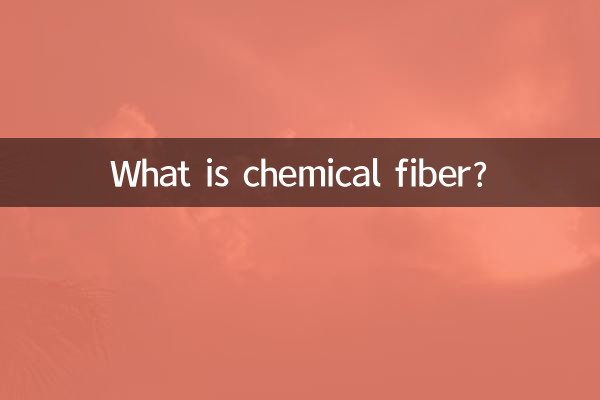What is chemical fiber?
In recent years, with the rapid development of the textile industry, chemical fiber, as an important raw material, has received widespread attention. This article will combine the hot topics and hot content on the Internet in the past 10 days to introduce in detail the definition, classification, uses and market trends of chemical fibers to help readers fully understand this important material.
1. Definition of chemical fiber

Chemical fiber, the full name of chemical fiber, refers to fibers artificially synthesized through chemical methods. Unlike natural fibers (such as cotton, linen, silk, wool), the raw materials of chemical fibers come from fossil fuels such as petroleum, coal, and natural gas, or renewable resources such as plant cellulose. The production process of chemical fibers includes polymerization, spinning, post-processing and other links, and finally forms fiber materials that can be used for textiles.
2. Classification of chemical fibers
Chemical fibers can be divided into the following categories based on different raw materials and production processes:
| category | Main varieties | Features |
|---|---|---|
| synthetic fiber | Polyester (polyester), nylon (nylon), acrylic, spandex | High strength, wear-resistant and corrosion-resistant, but poor air permeability |
| Regenerated fiber | Viscose, Modal, Lyocell (Tencel) | The raw material is natural plant cellulose, which is soft to the touch and has good hygroscopicity. |
| Inorganic fiber | fiberglass, carbon fiber | High temperature resistance, high strength, mostly used in industrial fields |
3. Uses of chemical fibers
Chemical fibers are widely used in many fields due to their excellent properties:
1.Clothing and Textile: Chemical fibers can be used to make various types of clothing and home textile products. Polyester is often used in sportswear and down jacket fabrics, and spandex is used in elastic clothing.
2.Industrial field: High-strength chemical fibers (such as carbon fiber) are used in high-end industries such as aerospace and automobile manufacturing.
3.medical supplies: Medical non-woven fabrics, surgical sutures, etc. are also often made of chemical fiber materials.
4.articles for daily use: Chemical fibers are also used to make ropes, filter cloths, carpets, etc.
4. Market trends of chemical fibers
According to recent industry data analysis, the chemical fiber market shows the following trends:
| trend | Specific performance | Cause analysis |
|---|---|---|
| Environmental protection | The proportion of bio-based chemical fibers increases | Global environmental protection policies are becoming stricter and consumers’ green awareness is increasing |
| Functionalization | Increased demand for antibacterial, anti-UV and other special fibers | After the epidemic, health needs increased and outdoor sports became popular |
| Intelligent | Research and development of conductive fibers and temperature-sensitive fibers are accelerated | Wearable device market expands |
5. Controversy and future of chemical fiber
Although chemical fiber has many advantages, it also faces some controversies:
1.environmental issues: Traditional chemical fibers are difficult to degrade, causing concerns about microplastic pollution. Recent hot searches show that many brands have been criticized by environmental organizations due to microplastics in chemical fiber clothing.
2.health controversy: Some chemical fibers have poor air permeability and may cause skin allergies and other problems.
In the future, the chemical fiber industry will develop in a more sustainable direction:
- Develop degradable bio-based chemical fibers
- Improve recycling technology and increase recycling rate
- Develop more comfortable and healthier functional fibers
Conclusion
As an important raw material for the modern textile industry, chemical fiber is not only meeting the growing needs of human beings for clothing, but also faces the challenge of transformation and upgrading. With the advancement of technology and the improvement of environmental awareness, chemical fibers in the future will be greener, smarter and more multi-functional, bringing more possibilities to human life.

check the details

check the details